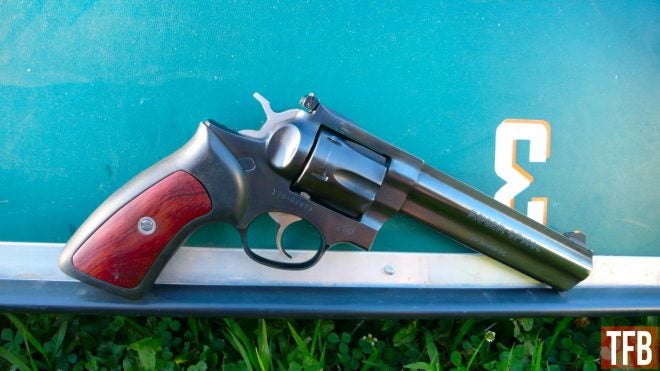On this edition of TFB’s Wheelgun Wednesday, we’ll take a look at the stout-hearted Ruger GP100, chambered in .357 Magnum. The GP100 holds a special place in my collection as it was the first revolver I bought just shy of 20 years ago. When I decided to buy my first revolver, the Ruger GP100 wasn’t winning any beauty contests, but I didn’t think it was outright ugly either. The price was very reasonable, especially given the great reputation for its reliability. Let’s dig in.
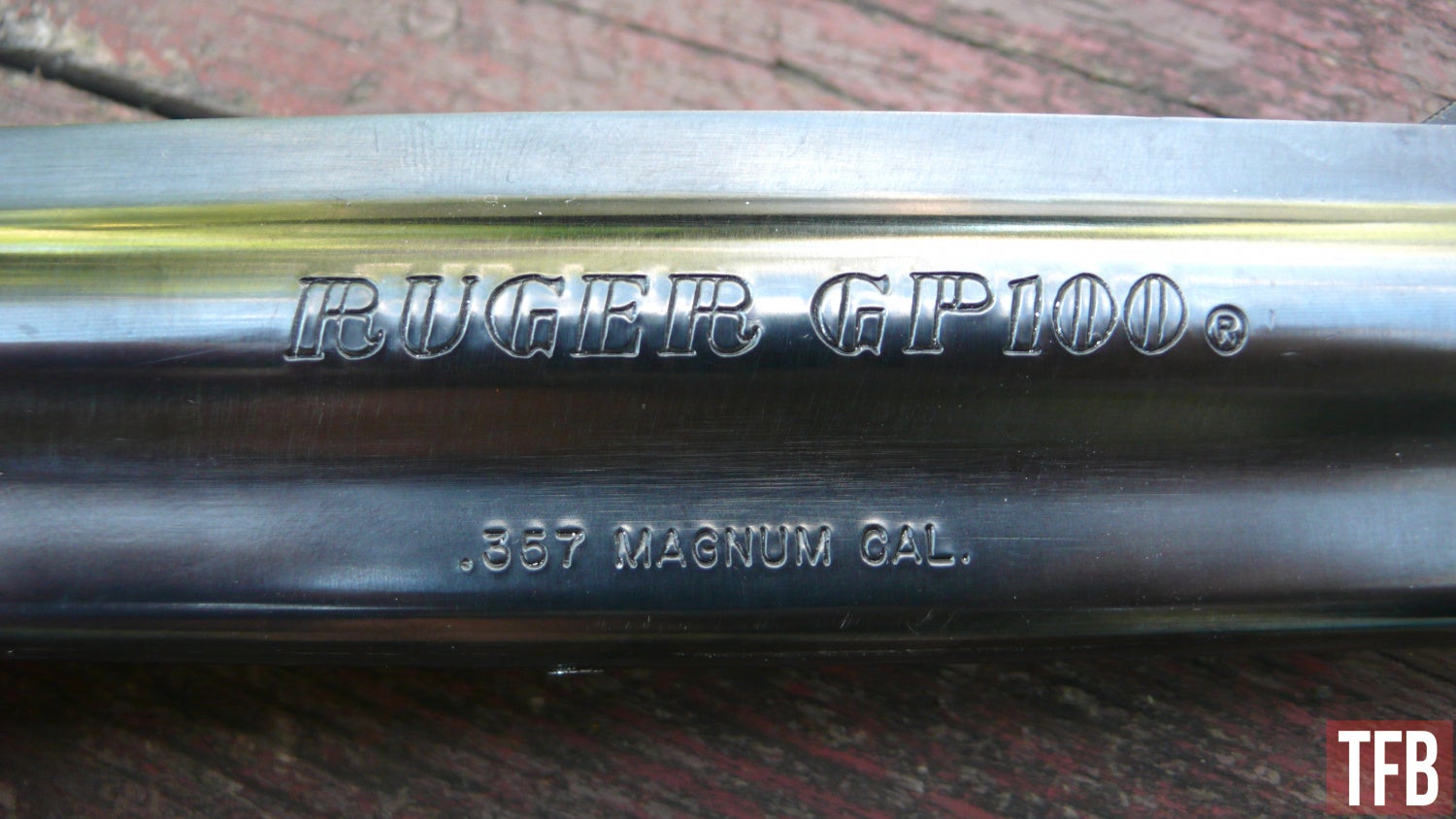
Ruger gp100 HISTORY
The Ruger GP100 was the successor to the Security Six and Service Six models and production began in 1985 and was introduced the following year. The stainless model followed in 1987. I haven’t seen anything officially stated by Ruger, but it’s commonly accepted that the “GP” stands for General Purpose. The GP100 was initially only chambered in .357 Magnum, which of course included .38 Special, though since then it’s also been chambered in .22 LR, .327 Federal Magnum, 10mm Auto and .44 Special. The barrels have also been offered in 3, 4, 5, and 6 inch lengths, which help to round out the meaning of General Purpose.
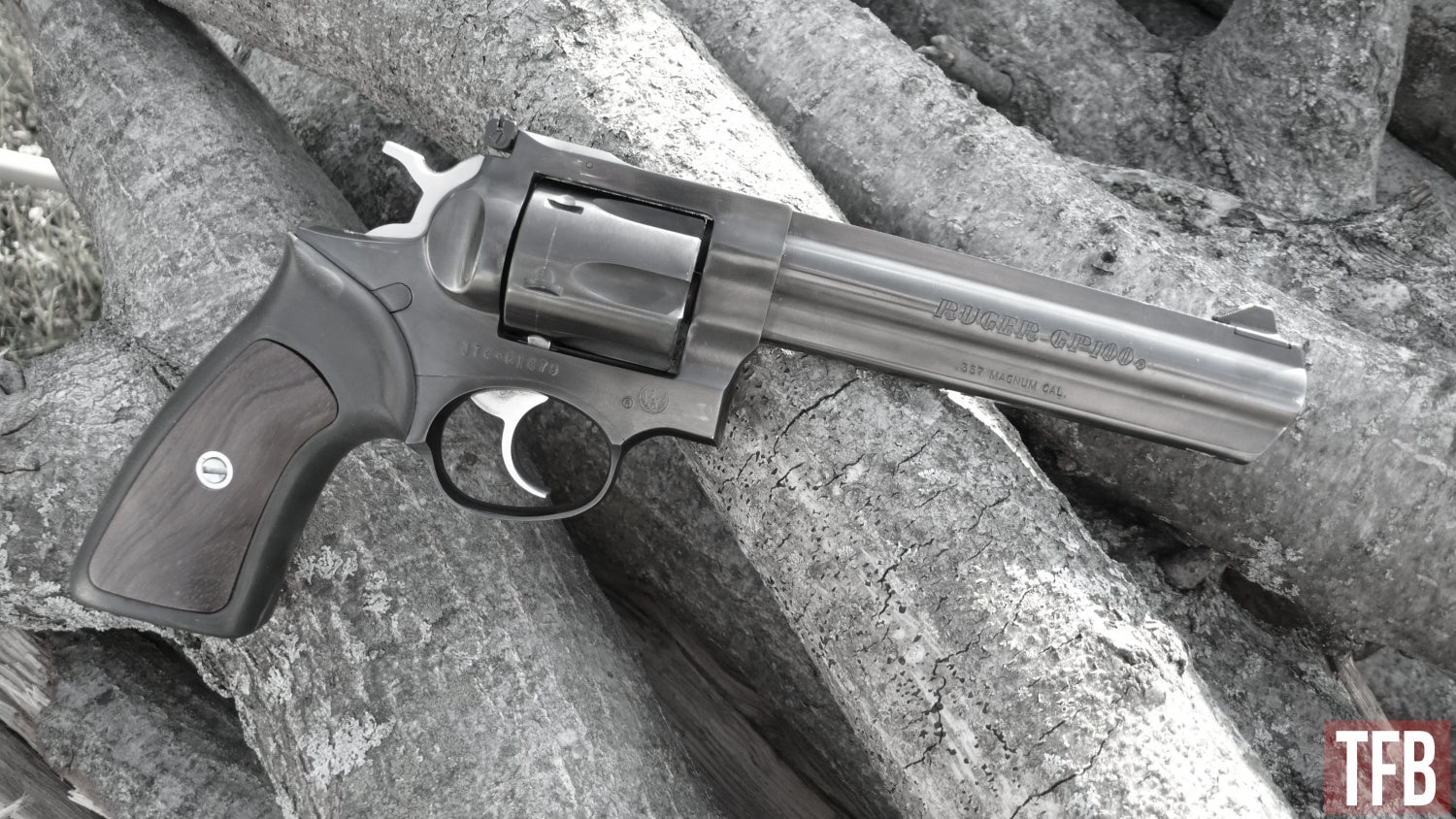
USE
Given the different options of Ruger’s GP100 over the years, it’s seen use in hunting, hiking, concealed carry, security and law enforcement issue, or just as a fun plinking gun. I opted for the six-inch barrel for that extra oomph factor with the .357 Magnum, and for the chance that I may hunt with it someday, which I have yet to do. In general, I prefer to only shoot magnum loads through it to ease cleaning carbon rings in the chambers left by .38 Specials. As time has worn on, it seems that the price difference between .38 Spc and .357 Mag ammunition has narrowed, but at least for my budget, feeding my GP100 is getting harder to do.
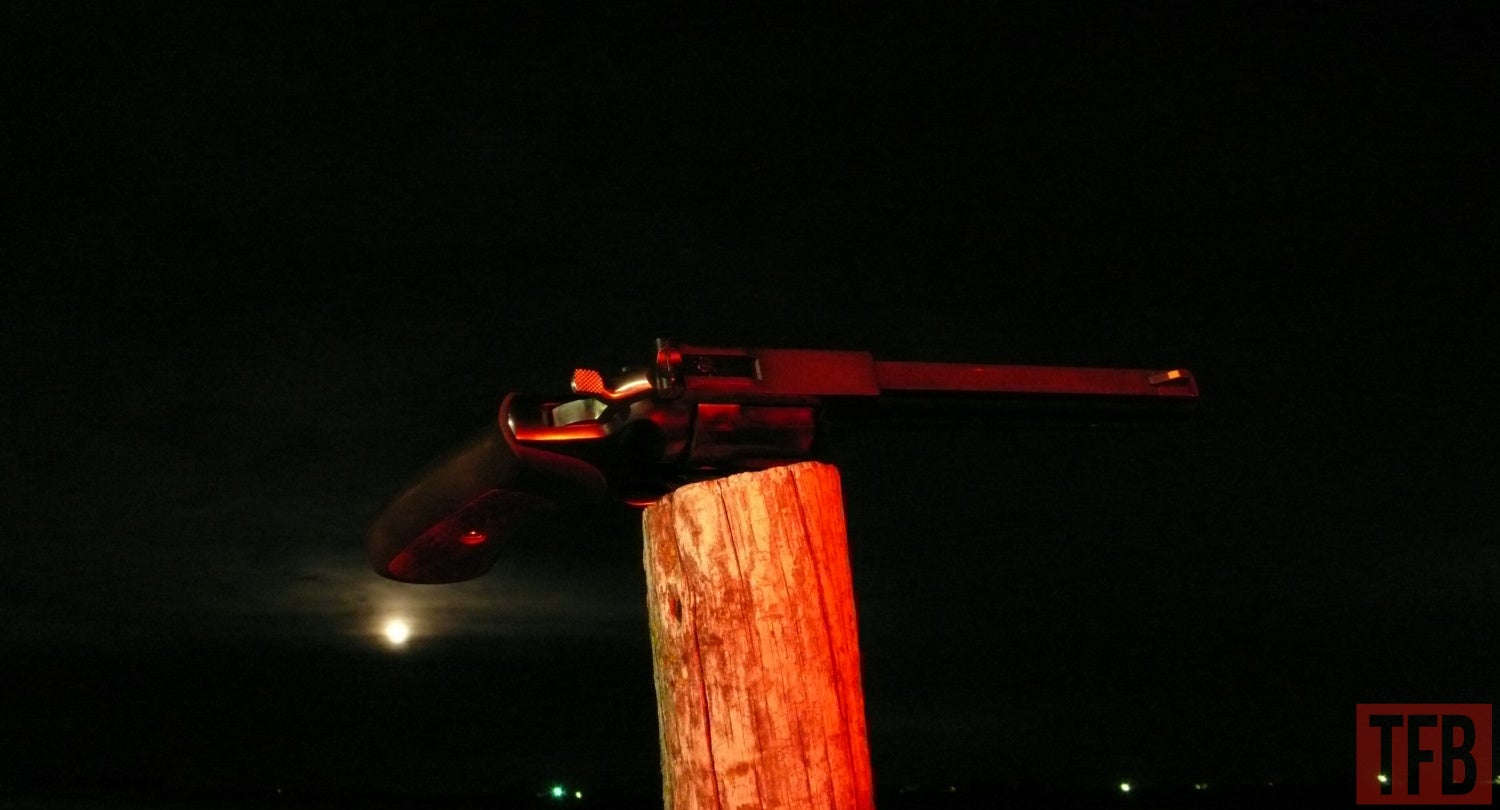
Despite the cost of ammunition, it’s always a joy to see the results of the sheer power the .357 Magnum is capable of, and it’s no wonder that the .357 Magnum has retained a legendary place in history. Years ago, we had a non-stick frying pan that needed to be retired. I decided to shoot the pan before recycling it and was surprised to see it stop 9mm and .40 S&W, but it was quite satisfying to see the .357 Magnum from my Ruger GP100 sail right through it.
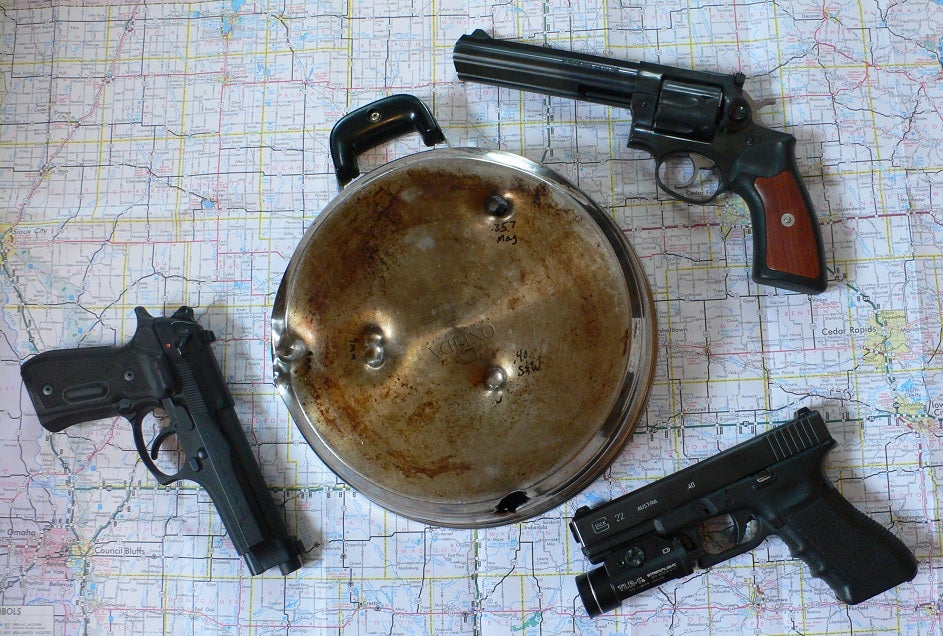
MAINTENANCE
One really nice aspect about the Ruger revolver design is its ease of maintenance. Even though the disassembly is a multi-step process, each step is easy, and easy to remember once you’ve mastered it. I wrote a TFB Field Strip tutorial about it HERE.
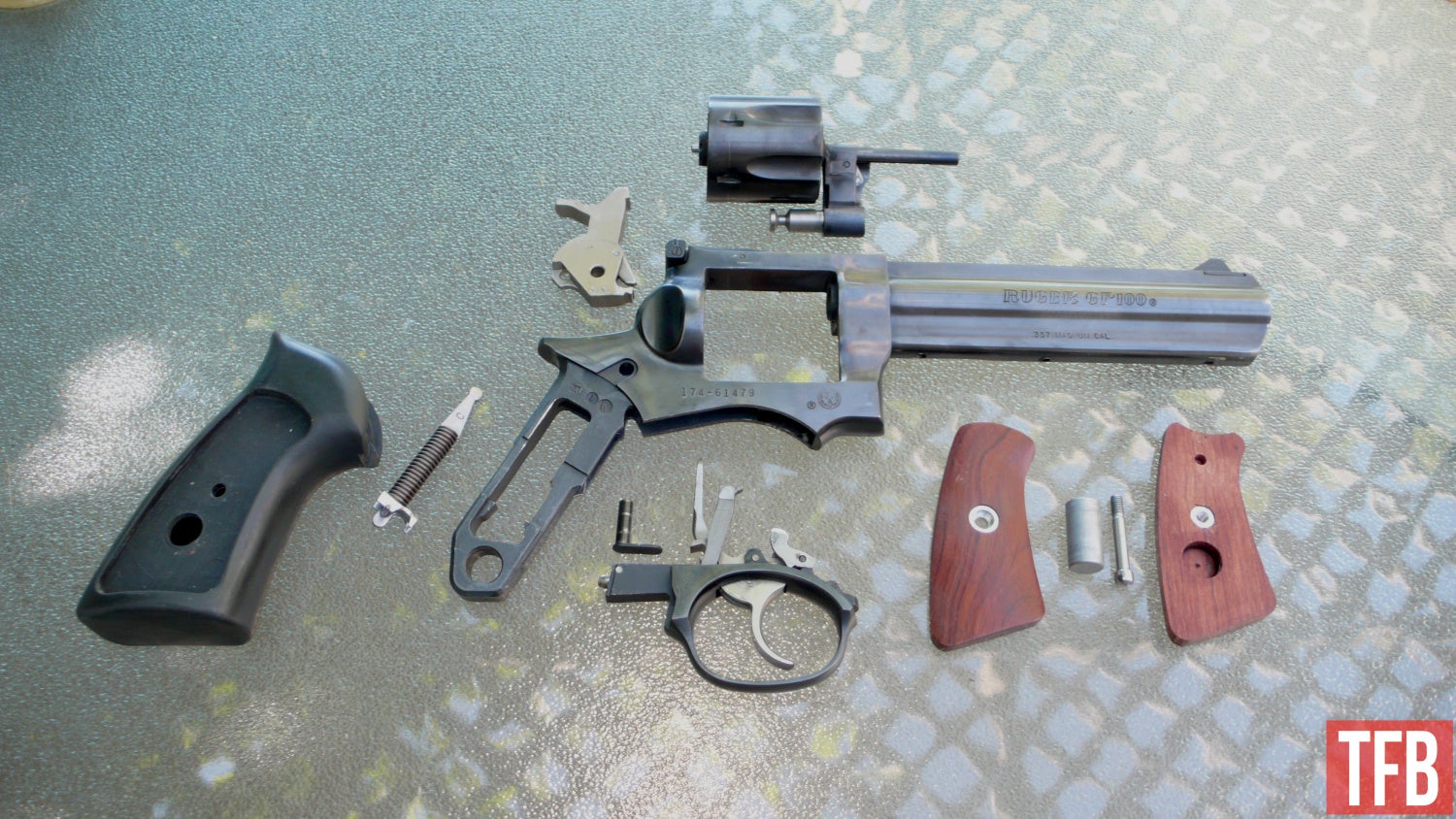
TRIGGER TIME
My Ruger GP100 has been 100 percent reliable with everything I’ve fed it. The weight of the GP is part of what makes shooting it so fun. Shooting .38 Special through it is extremely easy and feels almost like a .22 LR pistol, while stepping up to .357 Magnum is also quite tame, the concussion of the stouter cartridge confirms you’ve just launched something substantial. I was finally able to shoot a few rounds of 180 grain .357 Magnum loads through my GP100 for this review, and even though the recoil was increased, the standard rubber grips also helped to absorb the impulse, which is another aspect to Ruger’s mainstay revolver that keeps shooting it a fun affair. I’ve held the newer models with the finger grooves, but I much prefer the original grooveless rubber grips with the wood panel inserts. I have been tempted to try the wooden grips that come standard on the GP100 Match Champion model, but haven’t ponied up for the price as of yet.
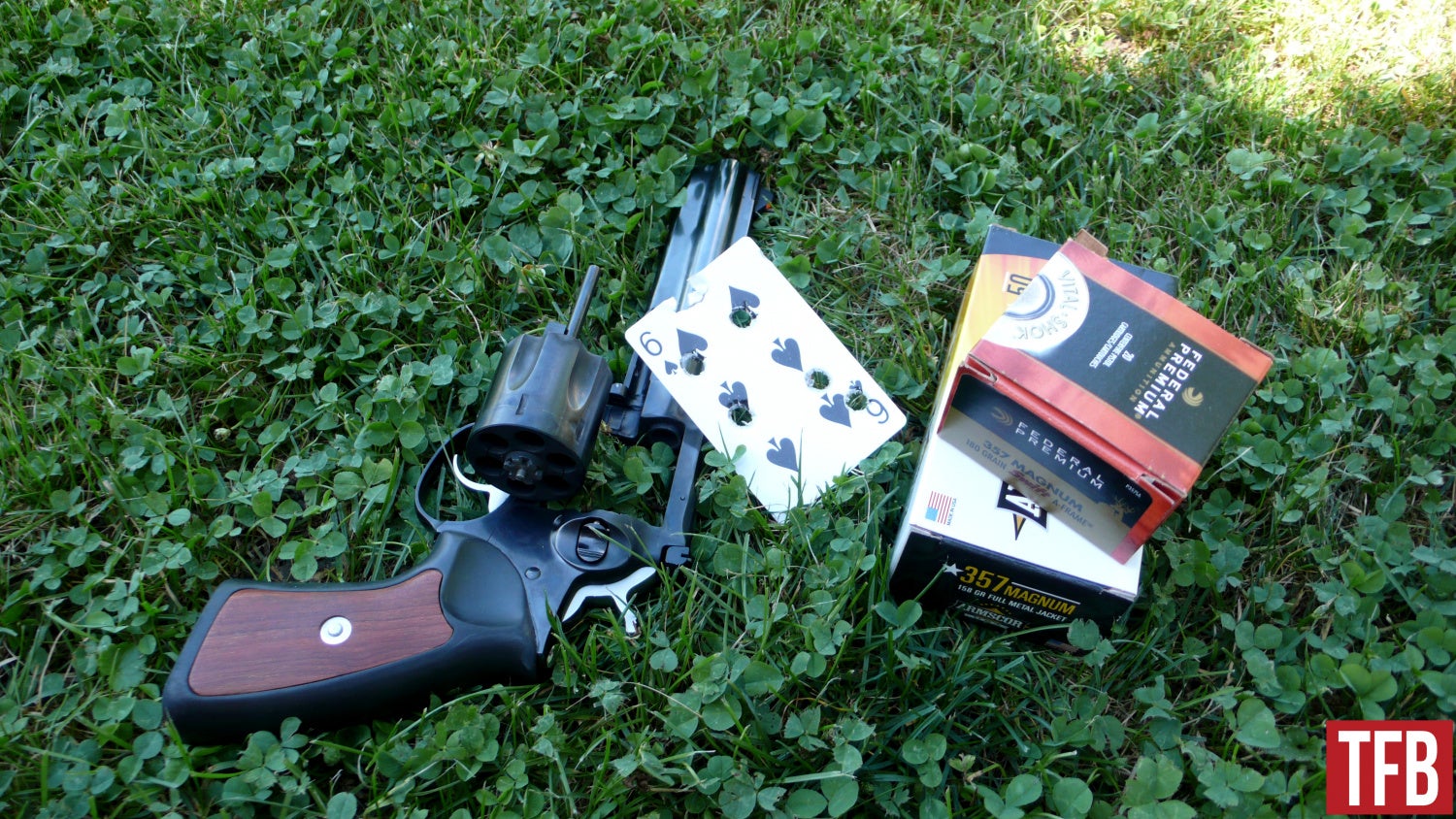
When I first bought my Ruger GP100, I needed to slightly adjust the rear sight for windage and elevation, and that’s the last time I’ve had to touch it, nearly two decades ago. I have since altered the front sight of my GP100 in that I wanted to be able to pick up the front sight a little faster. I added a small dab of bright orange fingernail polish to the top of the front sight ramp, which has indeed hastened my sight acquisition and aids in keeping the focus on the front sight. There are aftermarket replacements for the GP100 front sights, but for now, I’m happy with my slight modification.
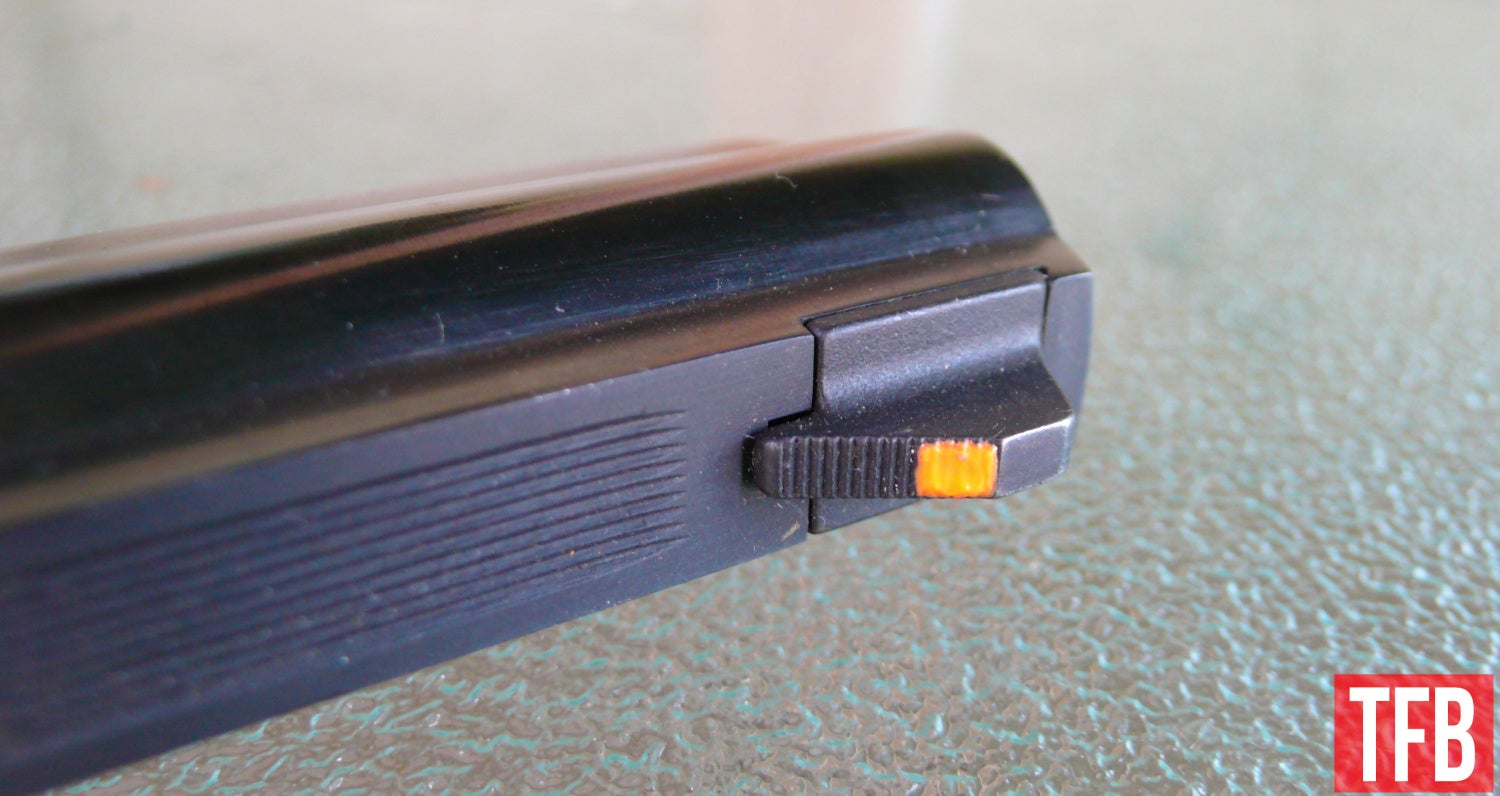
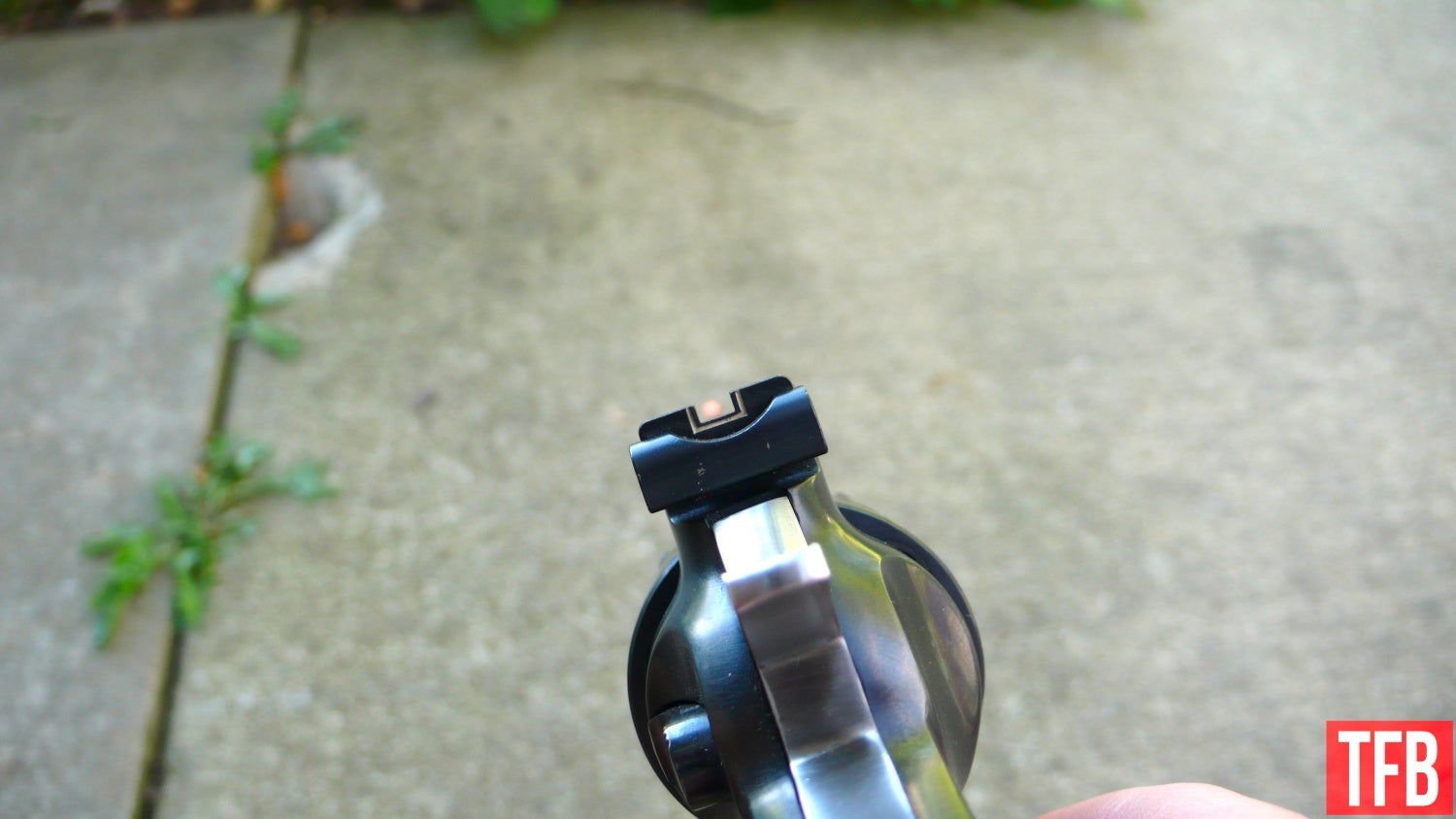
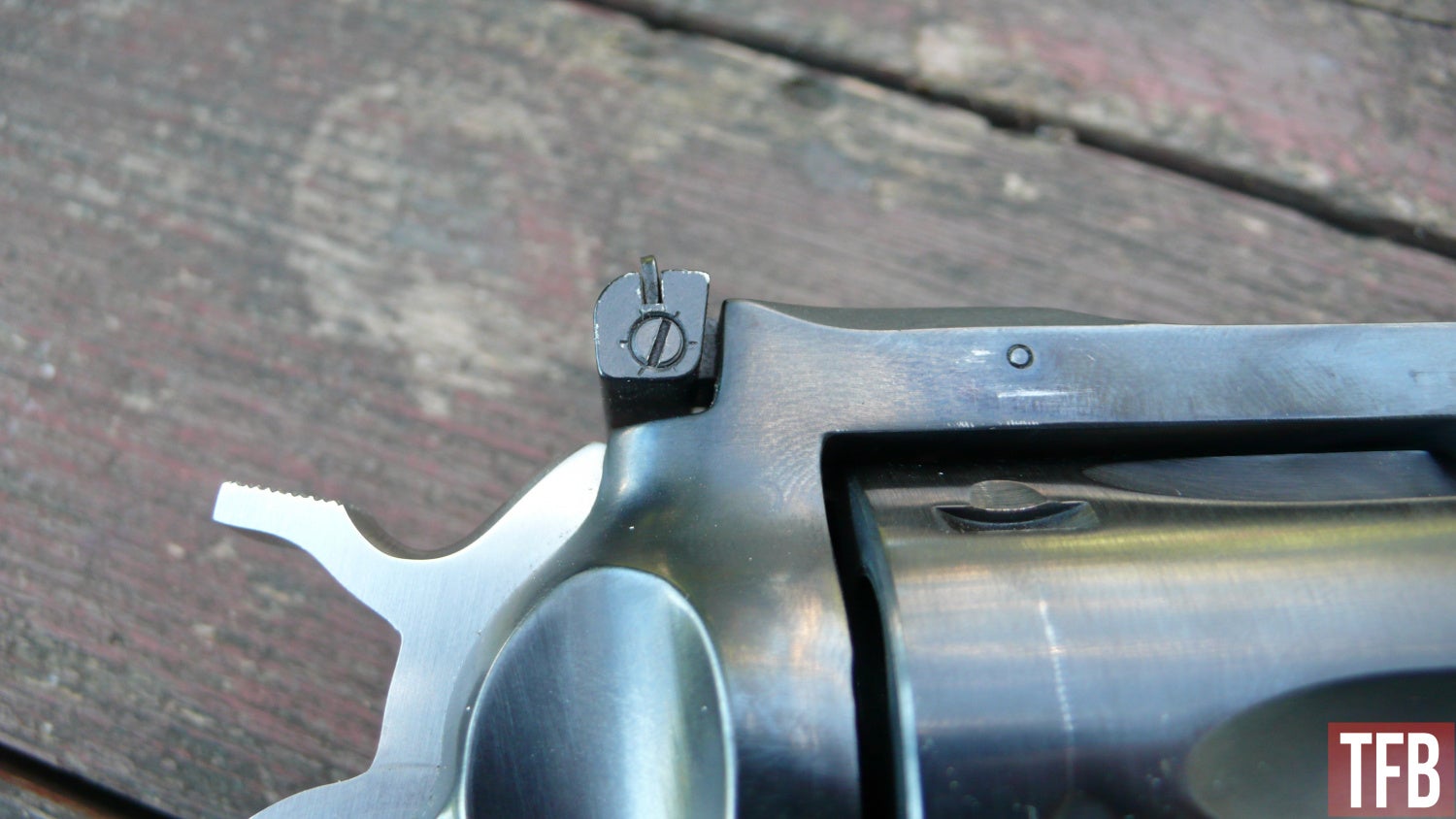
I do most of my shooting with the GP100 in double action only (DAO), which is smooth and easy on my specimen. There’s no grittiness, no slack, however, just before the trigger break in DAO, it feels a bit heavier than necessary. The single action trigger is light and crisp. Internet gun forums would have you believe that Ruger’s wheelgun triggers are a distant second compared to Smith & Wesson revolvers’ triggers, but I haven’t had any issues. There is a difference between them, but I personally couldn’t say that one is worse than the other based on my experience.
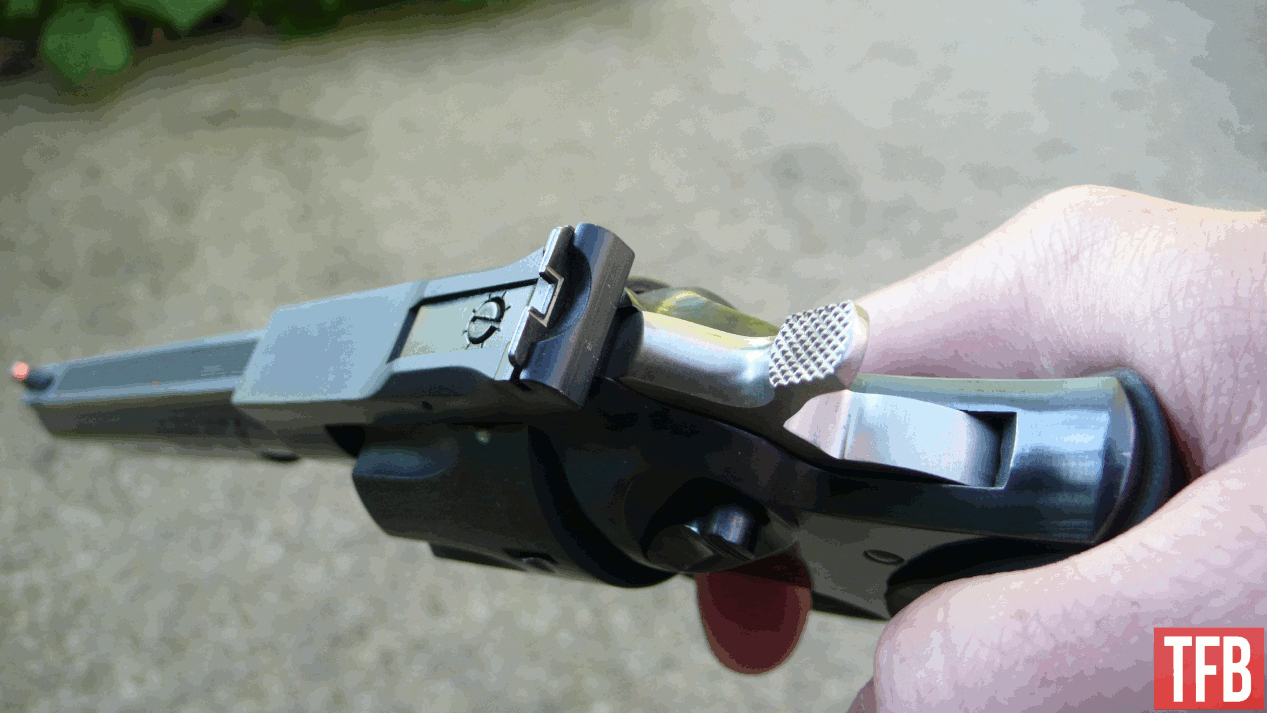
The transfer bar acts as an internal safety when the hammer is down so as not to ignite the cartridge under the firing pin. While the trigger is pulled, the transfer bar moves into position to transfer the hammer’s energy to the firing pin.
FINAL THOUGHTS
Despite my disagreement with gun forums on the GP100’s trigger, I can’t dispute the general consensus that Ruger builds tanks, and the GP100 is a prime example of a stout, working man’s revolver. For some, the robustness of the GP100 may be a drawback in terms of weight for the capacity. As mentioned earlier, the Ruger GP100 is offered in various barrel lengths, adjustable or fixed sight options, blued or stainless finishes, as well as different choices of grips, so the price may vary, but the MSRP ranges from $769 to $899. There are also distributor special models made for Talo or Lipsey’s that are listed on Ruger’s website.
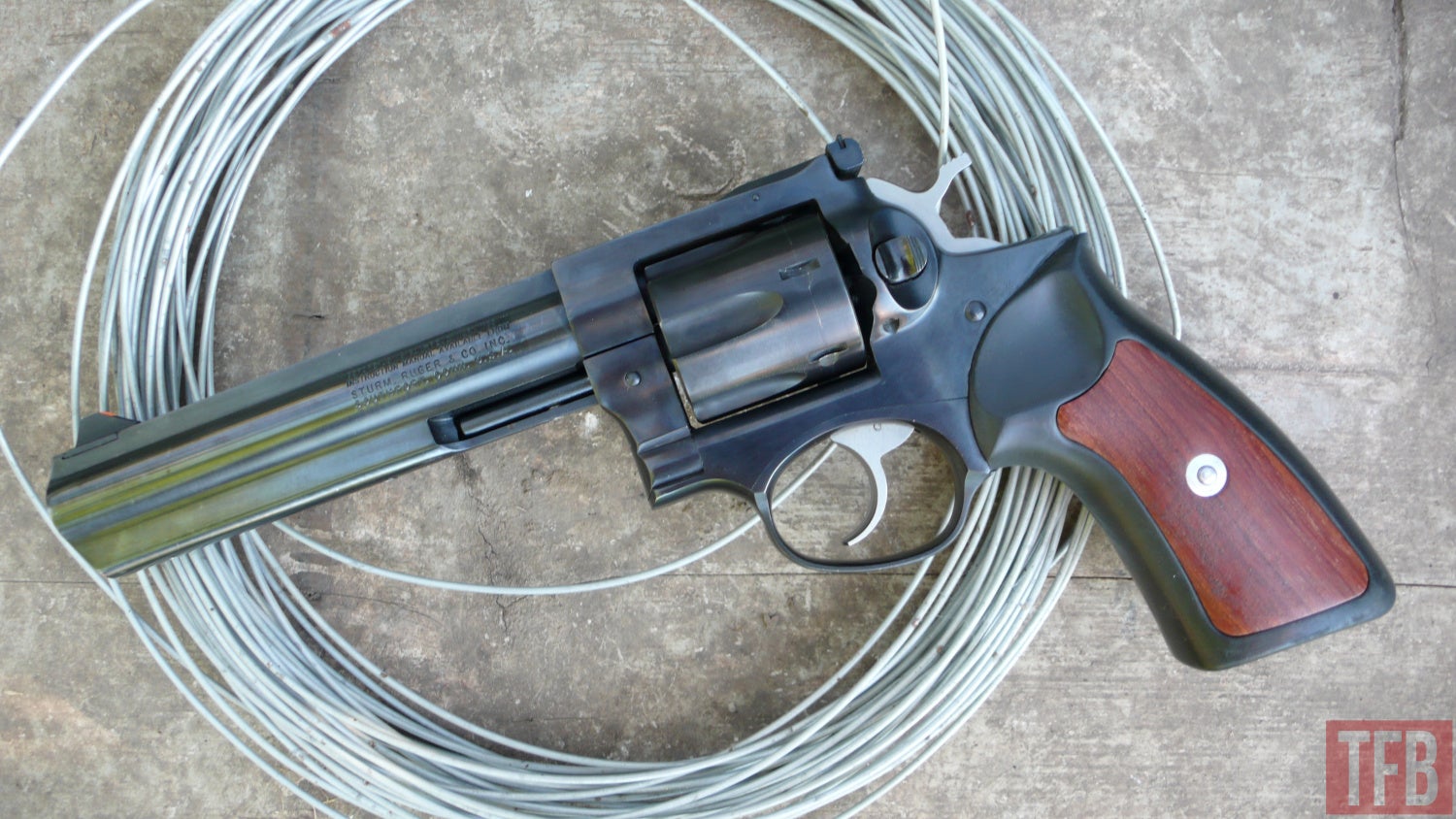
What do you think of the Ruger GP100? If you already own one, how has your experience been with it? If you’ve been thinking of getting a GP100, which version catches your eye?
We are committed to finding, researching, and recommending the best products. We earn commissions from purchases you make using the retail links in our product reviews. Learn more about how this works.
 Your Privacy Choices
Your Privacy Choices
